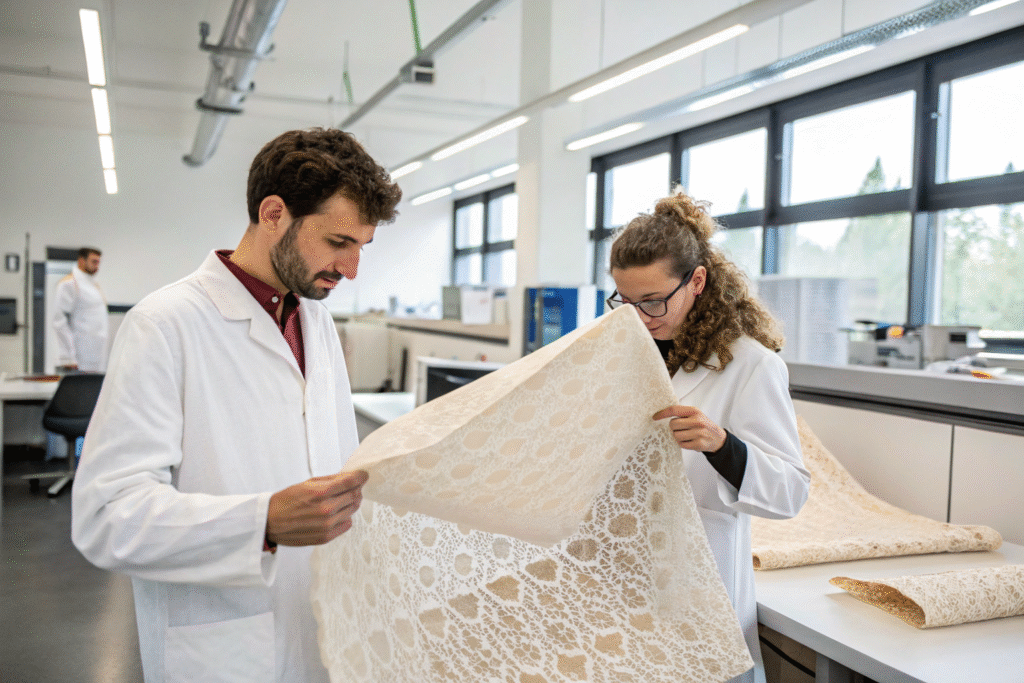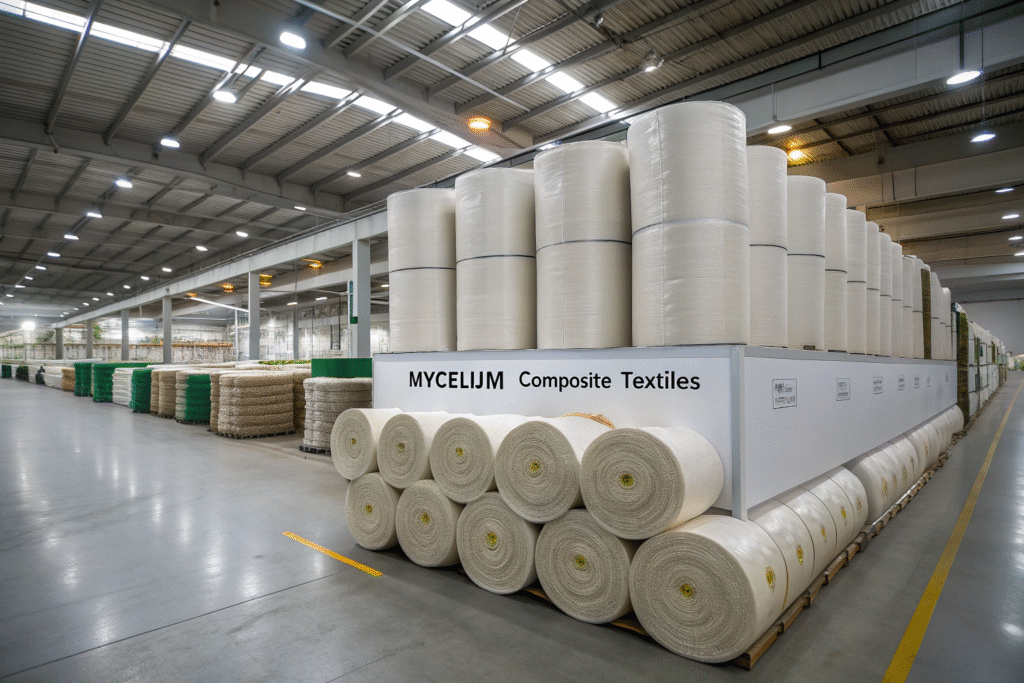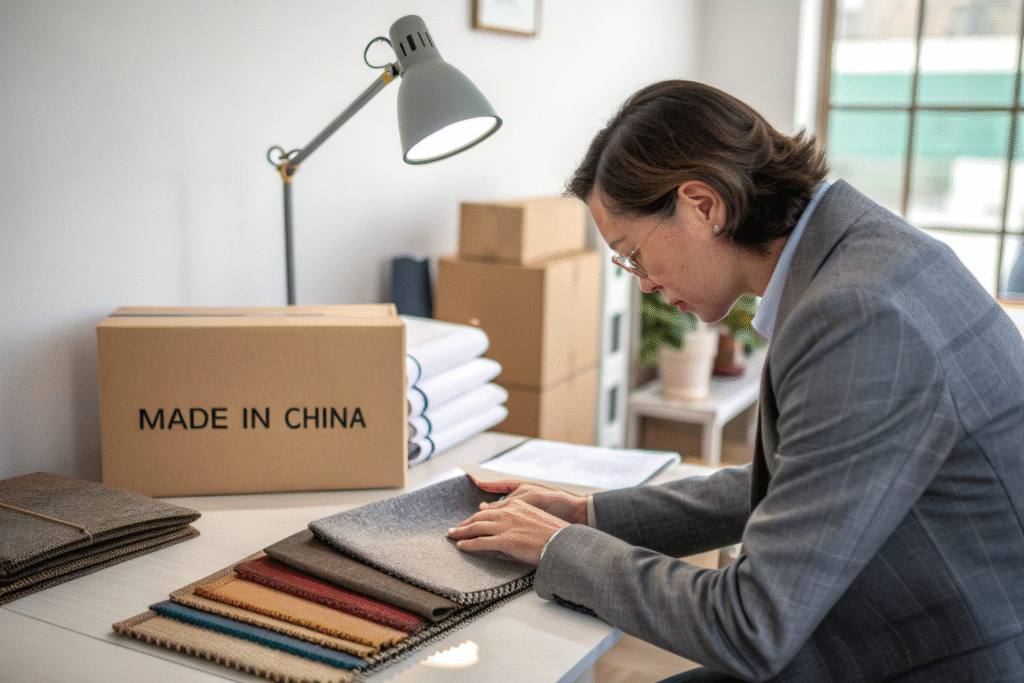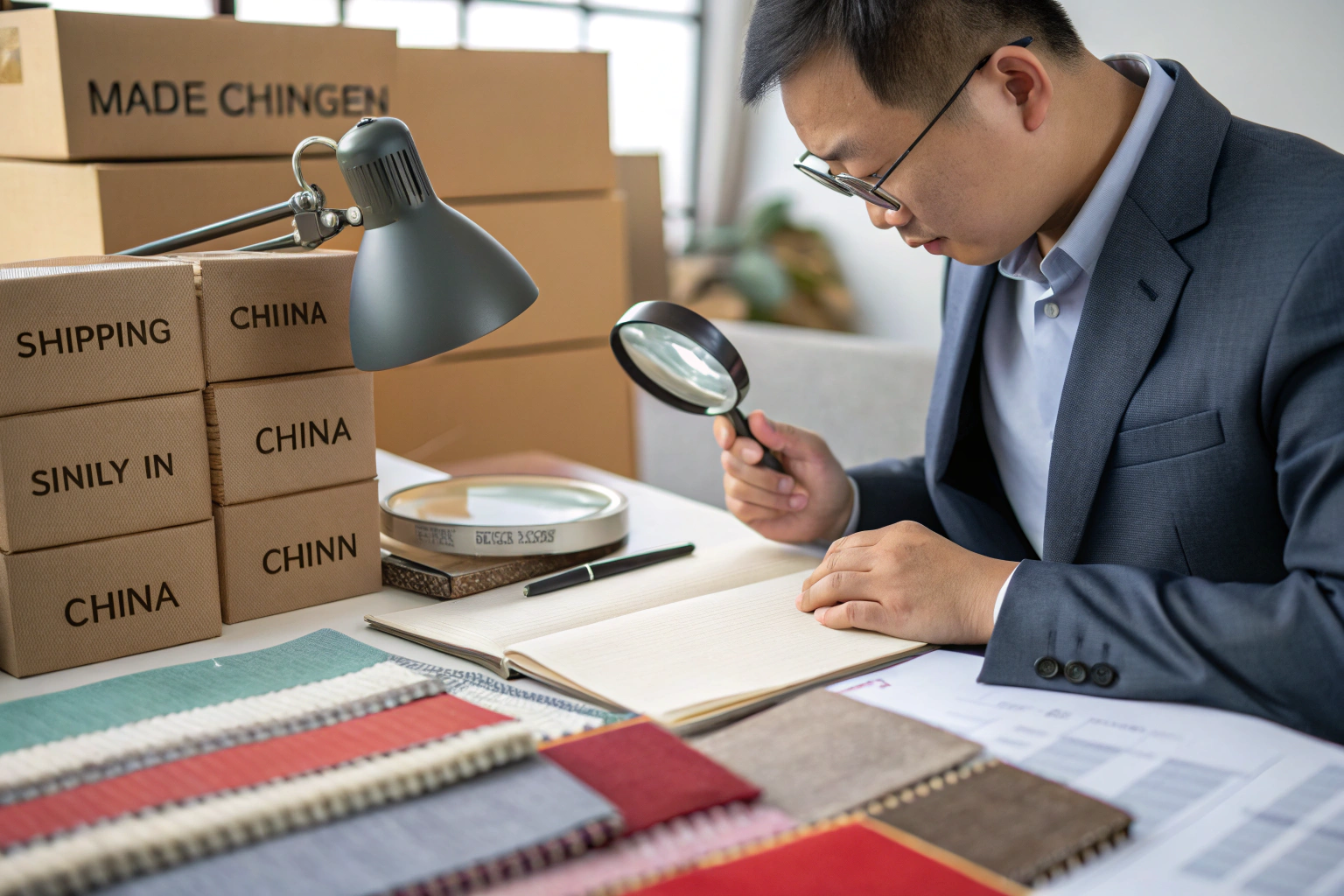In today’s global textile industry, sustainable materials are more than just a trend—they are a necessity. Many brands, from luxury fashion houses to athletic wear innovators, are now exploring mycelium-based textiles as an alternative to leather and synthetic composites. The challenge is not only in understanding what this material is but also in knowing how to source it reliably for scalable production.
Mycelium-reinforced composites are created from the root network of fungi, grown into structures that can mimic leather or serve as lightweight reinforcements in fabrics. They combine natural biodegradability with impressive durability, making them an attractive option for eco-conscious brands.
If you are a buyer, sourcing manager, or entrepreneur seeking innovative fabrics, you need to know where to find these materials, what certifications to look for, and which suppliers can deliver consistent quality. Let’s explore the sourcing landscape step by step.
Top Global Suppliers of Mycelium Textiles
Global suppliers of mycelium textiles are still limited, but the ecosystem is expanding fast.
Today, the leading suppliers are biotech startups and specialized fabric developers in the U.S. and Europe. Companies like Bolt Threads and MycoWorks have pioneered mushroom leather alternatives that luxury brands are already using. In Europe, companies such as NEFFA and Mogu have invested heavily in scalable technologies for furniture and fashion.

What certifications should suppliers provide?
Reliable suppliers must show certifications like OEKO-TEX, REACH compliance, and even USDA BioPreferred for bio-based materials. For American buyers, checking whether a supplier meets California Prop 65 compliance is also key.
How to verify production capacity?
Most mycelium suppliers are startups, so confirming their ability to scale is essential. Ask about their pilot projects, annual capacity, and partnerships with established brands. For example, MycoWorks recently signed a deal with Hermès, proving both scalability and quality.
Challenges in Large-Scale Sourcing
While mycelium textiles are exciting, they are not yet mass-market.
The biggest challenge in sourcing these materials is balancing innovation with availability. Since these materials are still emerging, lead times are often long, and prices are higher than conventional leathers or synthetics.

Are shipping and logistics reliable?
Unlike cotton or polyester, mycelium textiles often come from specialized labs with limited global distribution networks. Buyers need to plan logistics carefully, considering air freight for small batches and sea freight for bulk orders. Partnering with established sourcing agents in China can reduce delays.
Can costs be competitive?
The cost of mycelium composites is 5–7 times higher than standard synthetic leather. However, brands that value sustainability often view this as a branding investment. Some startups are working on scaling technologies that could bring costs closer to vegan leather alternatives.
How to Source Mycelium Textiles from Asia
Asia, especially China, is not yet a leader in biotech fabric innovation, but it is strong in scaling and processing technologies.
For buyers seeking mycelium-reinforced fabrics, the most effective strategy is hybrid sourcing: obtain biotech-developed materials from Western innovators and then use Chinese factories for finishing, laminating, coating, and mass processing.

Which trade shows feature mycelium textiles?
Exhibitions like Intertextile Shanghai and Biofabricate in New York often showcase startups presenting new biomaterials. Attending these events helps buyers build connections directly with R&D teams.
What role do Chinese suppliers play?
Chinese factories, especially in Keqiao and Guangdong, excel at scaling production, quality control, and customization. Once biotech startups produce mycelium sheets, these factories can convert them into usable rolls of fabric for fashion, upholstery, or accessories.
Key Buying Tips for U.S. Importers
Sourcing mycelium textiles as a U.S. buyer requires balancing quality, certification, and logistics.
The best approach is to treat these materials like premium investments. Buyers should vet suppliers carefully, negotiate smaller pilot orders, and use financial tools to minimize risks.

What payment terms are common?
Most biotech suppliers demand 30–50% upfront payment due to high production costs. Using trade assurance platforms or working through trusted Chinese intermediaries can help secure deals.
How to protect against tariffs and delays?
Since mycelium textiles are still categorized under broader HS codes (like artificial leather), U.S. importers must consult with U.S. Customs and Border Protection to confirm duties. Working with a supplier experienced in U.S. compliance ensures smoother customs clearance.
Conclusion
Sourcing mycelium-reinforced composite textiles is a journey that combines innovation, sustainability, and practical sourcing expertise. While global biotech startups lead the way in material development, Asian manufacturers offer the scaling power that makes these textiles viable for the global market.
If you want to explore reliable mycelium fabric sourcing or need support with eco-friendly textile development, we at Shanghai Fumao are here to help. Reach out to our Business Director Elaine at elaine@fumaoclothing.com to start building your own sustainable fabric supply chain today.










